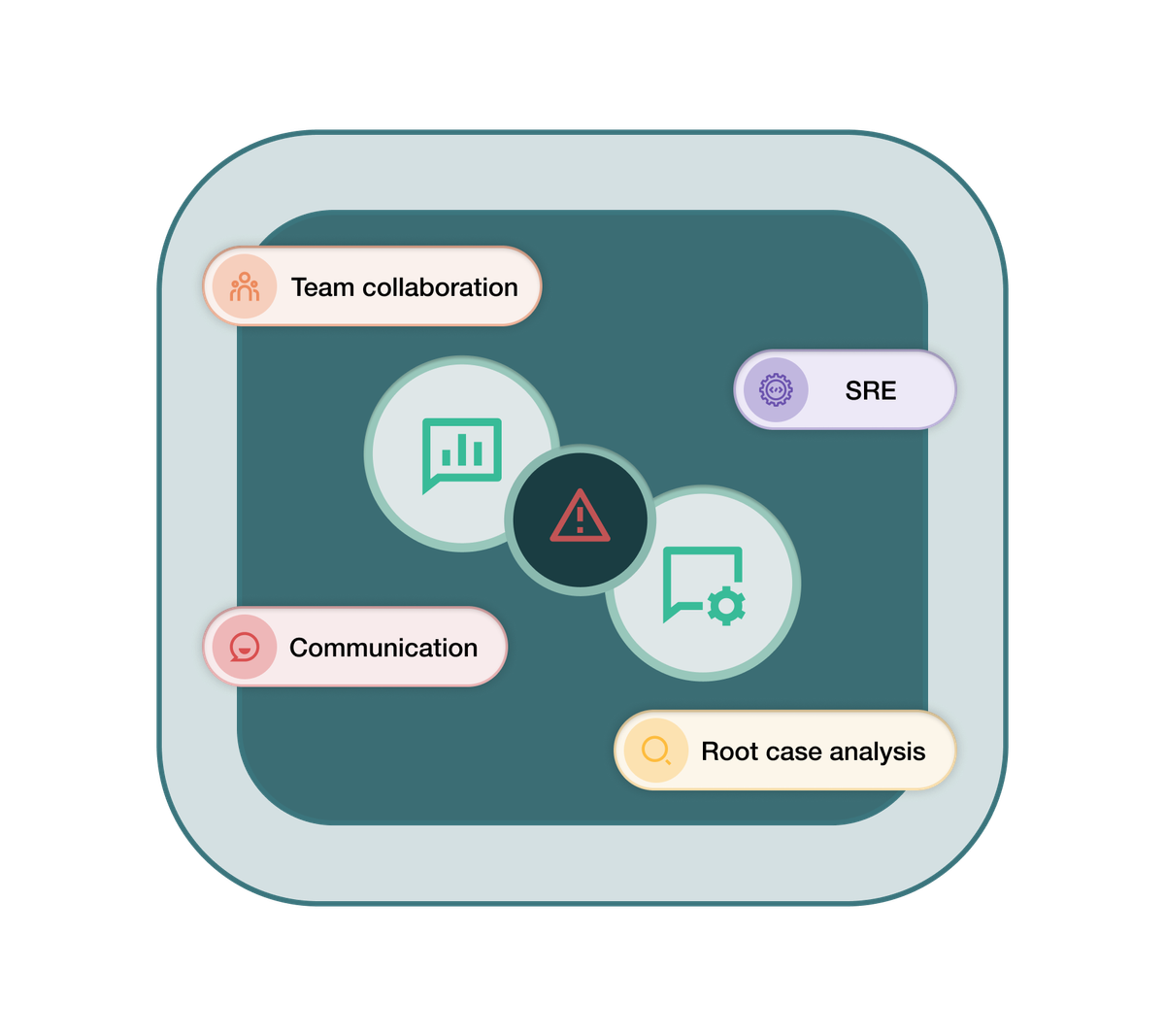This blog is the next part in my series on Site Reliability Engineering, and one of the more critical components for success – Incident Response.
Picture this: You're peacefully sipping a latte at your beloved coffee shop when suddenly, your phone erupts with critical alerts - your company's website is down! Panic sets in, but fear not, for Site Reliability Engineering (SRE) teams are your digital heroes, working behind the scenes to combat incidents that disrupt your digital services. But what exactly is an incident, and how do SRE teams navigate these stormy waters? In this blog, we'll embark on a journey through each phase of the incident response process, revealing the tools and techniques that keep your digital ship afloat.
Phase 1: The Swift Response - Racing Against Downtime
Incidents have the potential to wreak havoc on business operations, causing frustration for both customers and the team responsible for keeping everything running smoothly. SRE teams are masters at minimizing these disruptions through a swift response strategy. Here's how they do it:
- Swift Triage:
When an incident strikes, SREs are the first responders, swiftly assessing its severity. They consider factors such as impact, urgency, complexity, and root cause to gauge the incident's gravity. This assessment helps them allocate the right resources and prioritize actions effectively.
- Root Cause Analysis:
SREs do not just extinguish fires; they meticulously investigate the root cause. Identifying the underlying issue empowers them to prevent similar incidents, learn from their mistakes, and enhance the system.
- Team Collaboration:
Teamwork is paramount for SREs. They collaborate with experts from various fields, employing tools like chat platforms, video conferencing, incident management platforms, and status pages to coordinate seamlessly during incidents.
- Effective Communication:
SREs maintain transparent communication with stakeholders, managing expectations and building trust. Effective communication is the linchpin that ensures smooth incident resolution.
Phase 2: Post-Incident Analysis - Learning from the Past
SREs don't stop at resolving incidents; they transform them into valuable learning opportunities. After an incident is quelled, they embark on a post-incident analysis, consisting of four crucial steps:
- Data Collection:
SREs meticulously gather all pertinent data and information related to the incident, employing tools like dashboards, analytics, and databases.
- Timeline Creation:
They craft a chronological timeline of the incident, using diagrams, charts, or tables to visualize the events that transpired.
- Root Cause Identification:
SREs employ techniques like the '5 Whys' or fault tree analysis to pinpoint the incident's root cause, documenting it thoroughly.
- Action Item Generation:
Based on their analysis, SREs generate and prioritize action items for improvement, specifying what needs to be done, who is responsible, and when it needs to be accomplished. Tools like tickets or tasks help manage these action items efficiently.
Phase 3: What Went Wrong - Unpacking the Incident
SREs embark on a meticulous exploration of the incident, dissecting its causes, identifying areas for improvement, and recognizing what went well. They utilize methods such as blameless postmortems, key performance indicators (KPIs), and service level objectives (SLOs) to facilitate this process.
Phase 4: Lessons Learned - Documenting and Sharing Insights
SREs ensure that lessons learned from incidents are not lost. They meticulously document and share these insights to prevent recurring issues. Tools like knowledge bases, training sessions, and feedback mechanisms play a crucial role in this endeavor.
Phase 5: Preventative Measures - Fortifying Against Future Incidents
Armed with insights from post-incident analysis, SREs proactively implement measures to fortify against future incidents. These measures encompass testing and validation, monitoring and alerting, and backup and recovery procedures.
Phase 6: The Human Element - Empathy and Continuous Improvement
Behind the technical prowess of SREs lies an essential human element - empathy. They approach incidents not just as technical puzzles but as challenges that impact people. Here's how they demonstrate empathy:
- Customer-Centricity:
SREs prioritize customer needs, actively seeking feedback to ensure the highest service quality.
- Collegiality:
They treat colleagues with respect, emphasizing problem-solving over blame, and fostering a collaborative environment.
- Empowerment:
SREs empower colleagues to learn and grow from incidents, nurturing a culture of continuous improvement.
Phase 7: Continuous Improvement - Staying Ahead of the Curve
SREs remain on the cutting edge by engaging in research and innovation, conducting experiments to optimize, and consistently evaluating and seeking feedback. These efforts ensure they are prepared to navigate new challenges effectively.
Conclusion:
Site Reliability Engineering (SRE) teams are the unsung heroes of the digital realm, ensuring the reliability, availability, and scalability of your digital services. They respond to incidents with speed, skill, and empathy, following a structured process that encompasses detection, diagnosis, mitigation, and learning. SREs prioritize communication, teamwork, and continuous improvement to ensure your digital ship sails smoothly. So, the next time you enjoy a latte at your favourite coffee shop, rest assured that SRE teams are hard at work, safeguarding your digital experience.

